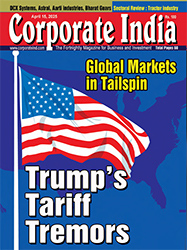Want to Subscribe?
Read Corporate India and add to your Business Intelligence

![]() Unlock Unlimited Access
Unlock Unlimited Access

Investment
Published: June 16, 2023
Updated: June 16, 2023
One of the crucial decisions an employee faces regarding their financial future is whether to opt for the Employee Provident Fund (EPF) or not. The EPF is a savings scheme offered by the government that helps individuals build a corpus for their retirement. However, it is essential to consider various factors, including savings benefits, administrative issues, and other perspectives, before making a well-informed choice. This article delves into the advantages and disadvantages of opting for the EPF, providing employees with valuable insights to make an informed decision.
One of the significant advantages of opting for the EPF is the opportunity to build a substantial retirement corpus. Regular contributions from both the employee and the employer, along with compounding interest, help in creating a sizeable savings pool over time. This ensures financial security during retirement and enables individuals to maintain their standard of living.
EPF contributions are eligible for tax deductions under Section 80C of the Income Tax Act. This provision allows employees to claim deductions on their EPF contributions, thereby reducing their taxable income. The tax benefits serve as an additional incentive for individuals to opt for the EPF, as it helps in optimizing their tax liabilities.
The EPF instills a sense of financial discipline by deducting a fixed percentage of an employee's salary towards savings. This enforced savings mechanism ensures that individuals set aside a portion of their income regularly, cultivating a habit of saving. Such disciplined savings can prove beneficial in achieving financial goals beyond retirement.
The EPF follows a lock-in period, which means that the accumulated savings cannot be withdrawn until retirement or under specific circumstances outlined by the EPF rules. This lack of accessibility may pose a disadvantage for individuals who require immediate funds for emergencies or other purposes.
While the EPF provides a safe and reliable investment avenue, the returns may be comparatively lower than potential gains from market-linked investments. Individuals who possess knowledge and expertise in investment options may feel that the EPF's conservative approach limits their ability to maximize their returns.
The EPF withdrawal process can be complex and time-consuming, involving various paperwork and documentation. Employees may face challenges when attempting to access their funds for specific purposes, such as purchasing a house or paying for medical emergencies. This administrative hurdle may deter individuals from opting for the EPF.
Another aspect to consider is the impact of inflation and changing economic factors on the
value of EPF savings. While the EPF provides guaranteed returns, its real value may erode
over time due to inflation. Employees need to assess their risk appetite and consider other
investment avenues that may offer higher inflation-beating returns.
Choosing whether to opt for the EPF as an employee involves a careful evaluation of its
advantages, disadvantages, and other considerations. While the EPF offers long-term
retirement savings, tax benefits, and enforced savings discipline, the restricted accessibility,
lower returns compared to market investments, and administrative issues need to be
considered. It is advisable for employees to assess their financial goals, risk tolerance, and
the availability of alternative investment options before making an informed decision.
Consulting with financial advisors can also provide valuable guidance to employees in
choosing the most suitable savings strategy for their individual circumstances.

April 15, 2025 - First Issue

Industry Review

Want to Subscribe?
Read Corporate India and add to your Business Intelligence

![]() Unlock Unlimited Access
Unlock Unlimited Access
Lighter Vein

Popular Stories
Archives
